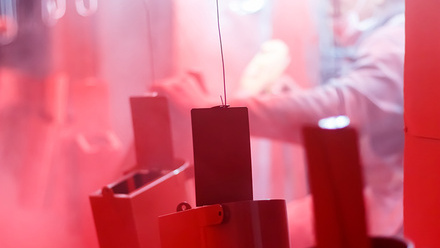Treating retinal detachment with algae
An artificial vitreous body for treating retinal detachment is being made from natural carbohydrates derived from algae.

The vitreous body is a gel-like substance that occupies the space between the lens and retina, contributing to the eye’s structural integrity.
Retinal detachment occurs when the retina separates from the inner wall of the eye and moves into the vitreous cavity, potentially resulting in blindness in severe cases.
Removing the vitreous body and substituting it with medical intraocular fillers, like expandable gas or silicone oil, is common, but has been associated with various side effects.
The team is presenting an alternative modified form of alginate, and has crafted a transparent, alginate-phenylboronic (ALP) acid/polyvinyl alcohol (PVA) composite hydrogel (TALPPH).
Alginate is widely used in various industries, including food and medicine, to create viscous products. The hydrogel is said to be closer to the human body in nature.
The paper, Injectable alginate-based in situ self-healable transparent hydrogel as a vitreous substitute with a tamponading function, states, 'TALPPH is able to build stable hydrogels by its fast in situ curing capacity, can be easily injected into the ocular space in a liquid state, and is non-toxic in vivo.
'The optical and rheological properties of the generated hydrogel were characterised and found to be similar to those of the human vitreous body in the physiological environment, which is expected to enable the immediate recovery of visual acuity after ocular injection. TALPPH stands out with its self-healing property, attributed to its distinctive chemical composition'.
Unlike previous methods, the paper in Biomaterials says, 'Any generated microbubbles during injection can be effortlessly dispersed due to the unique viscoelastic nature of TALPPH'.
The team at Pohang University of Science and Technology, South Korea, hypothesises, 'that an excellent vitreous substitute could be obtained by combining an ALP and PVA. Phenylboronic acid can react spontaneously with residues with two alcohol moieties and form reversible covalent bonds. Thus, this phenylboronic acid-diol reaction chemistry was used to enable rapid gelation in the eyeball without any additional stimulation for the crosslinking process'.
To validate the hydrogel’s stability and effectiveness, the team has conducted experiments using animal models, specifically rabbit eyes.
Implanting the hydrogel has been shown to prevent the recurrence of retinal detachment, maintaining stability and functioning well over an extended period without any adverse effects.
The paper concludes, 'TALPPH showed a transparency and refractive index that was similar to that of native vitreous while having an increased modulus and viscosity.'
The team wants to enhance and progress the technology to make the hydrogel suitable for use in real-world eye care through ongoing research.







